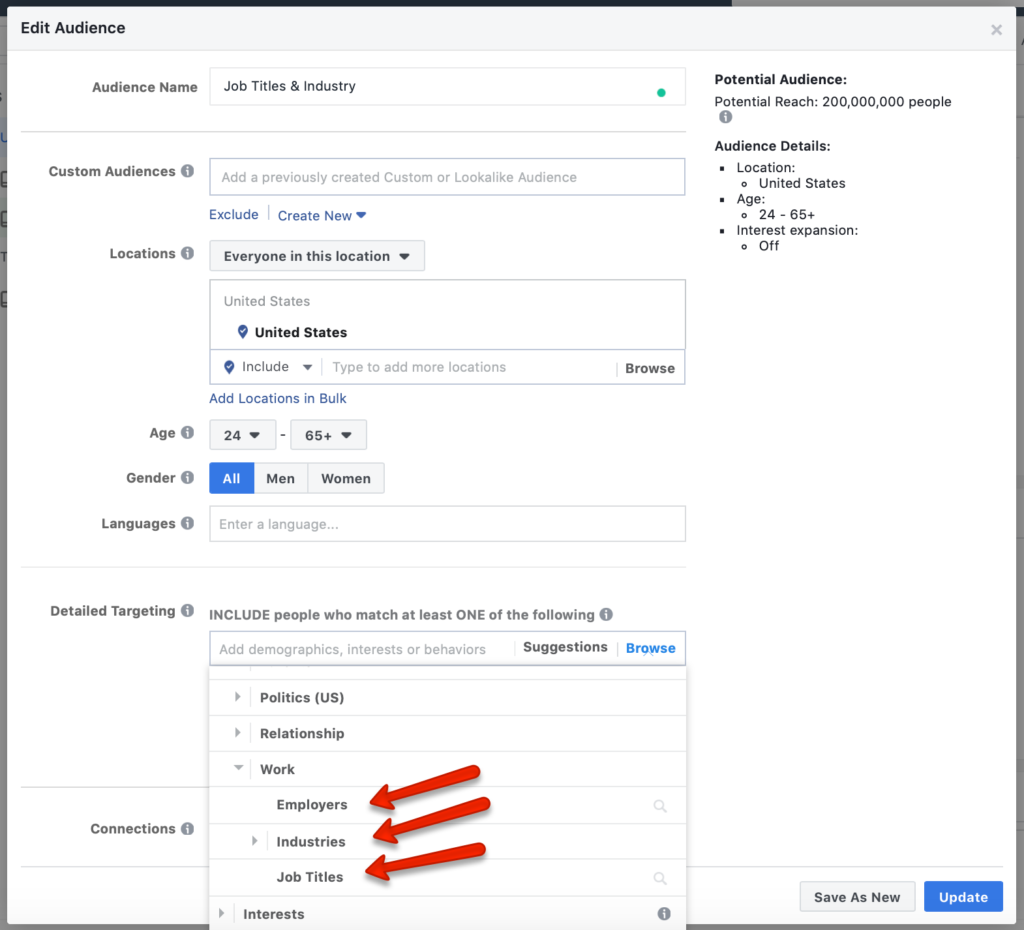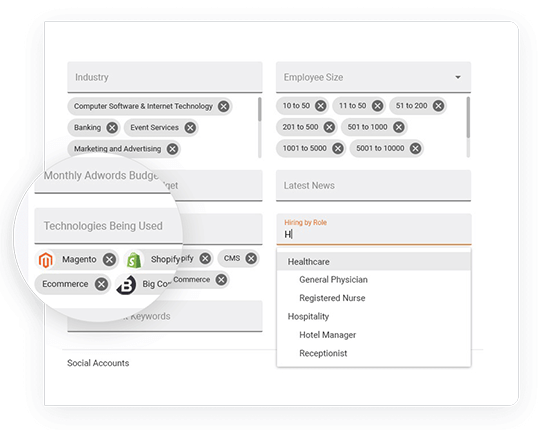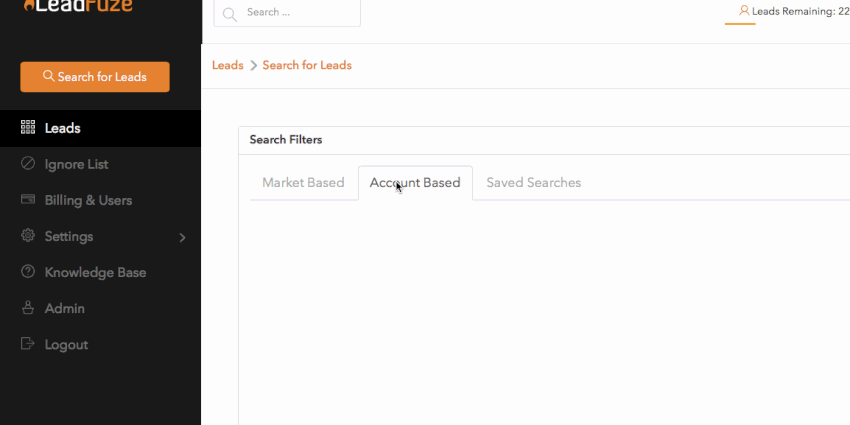What is Account Based Marketing?
Account based marketing (which is what ABM stands for) is a type of business marketing strategy that helps you focus your efforts on particular accounts within your target market. It uses personalized campaigns in reaching out to prospects, basing the message on the specific needs and pain points of the potential client.
ABM marketing is beyond lead generation. It markets to current customers to encourage cross-selling and upselling. As a result, the company using this strategy would get the most value from their largest accounts.
5 Benefits of Setting Account Based Marketing Strategies
Here are some benefits you can enjoy when you start using customer based marketing strategies:
1. Effective personalization
ABM focuses on reaching decision-makers within the same organization. Since it has such a narrow reach, it allows you to personalize your messaging to make it more effective.
Take note that your target accounts are more likely to respond to your marketing messages if you inject personalization techniques into them.
But don’t forget that there’s a fine line between a personalized and a creepy message.
2. Easier ROI attribution
With ABM, you’re marketing directly to buyers and thus have a clear understanding of how you’re spending your marketing budget, as well as what kind of return on investment you’re generating.
If your ROI shows that your ABM strategies are effective, you can use those results to improve your tactics and increase ABM sales.
3. Shorter sales cycle
ABM generates qualified leads at a greater rate than other marketing methods, allowing sales teams to spend less time nurturing leads that won’t convert.
Depending on the type of business or industry you’re in, your sales cycle may look something like this:
Prospect → Connect → Research → Present → Close → Delight
An ABM program can help you streamline this cycle by helping you focus your time, energy, and resources on particular high-value target accounts.
This way, you’ll be saving your time and resources and focus your efforts on specific stages in the cycle that’d greatly impact your marketing efforts.
Your sales cycle will then look like this
Identify target accounts → Present to target accounts → close target accounts → delight accounts
This means an ABM strategy can help you stay efficient. You don’t have to waste your time on prospecting and qualifying tons of leads, instead, you’d be building relationships with the most ideal accounts for your business.
4. Aligned sales and marketing teams
Communication and collaboration are important to any organization as they encourage growth.
The alignment and transparency that account based marketing offers can ensure that your sales and marketing teams understand the certain roles of each internal stakeholder, stick to the mutually agreed upon budget, and focus on the same goals.
With the alignment, your team would have consistency when it comes to content, interactions, communications, and more.
Regardless of how long a particular account works with your brand, every team member would have no trouble picking up where others left off.
This would result in a seamless customer experience.
5. Expand business through account relationships
An ABM campaign believes in “quality over quantity”.
Instead of trying to close deals with low-quality leads, you’d be engaging with carefully chosen high-value prospects.
Once you’ve built a relationship with them, you can expand your business — as long as you keep them happy, of course.
And take note that retaining customers costs less than obtaining new ones, so brace yourself for big profits.
Moreover, if you show them sincerity in helping with their pain points, they’d more likely become loyal to your business for a long time. When this happens, you’ll get free promoters, marketers, and brand advocates.
Some of them may even refer you to their friends and colleagues and others may leave incredible testimonials to entice new customers.
15 Practical Account Based Marketing Tactics and Examples
Perhaps you feel overwhelmed and don’t know where to start in creating your B2B account based marketing strategy.
No worries — I’ll let you in on a secret. The strategies you’ll apply for B2B ABM marketing are a lot similar to your inbound tactics.
Here are some strategies to jumpstart your ABM marketing journey:
1. Craft educational content
Valuable content can help you create demand for your product or service. Thus, it’s important to come up with educational content like the following:
- Whitepapers
- Webinars
- Workbooks
- Infographics
- Blog posts
- Informative guides
If you can properly execute your chosen content, it can be really powerful in attracting your target account.
It’d be more effective if you recognize your target accounts in your content. You don’t just simply mention their name or brand, instead, you should be crafting content about a topic they’re knowledgeable in and acknowledge their expertise.
This is one of the best ways you can introduce yourself to your target account — by complimenting their idea or product.
2. Host events relevant to your target accounts
Sure, communicating through our mobile devices and computer is the new trend. Still, nothing beats face-to-face interaction.
That’s why, it can be really helpful to your brand if you start hosting big or small events relevant to your target accounts, within their cities.
By bringing the event to their place of residency, you’ll get a higher attendance rate. They’re already in the area, so they will most likely attend, especially if the event interests them.
3. Send personalized emails
Oh, this one can be tricky! But if you can pull this off, you can easily secure a conversation with your target accounts.
Failure to personalize will result in your email ending up in the trash folder — and you definitely don’t want that.
However, you may not want to be ‘too personal’ as it may come across as intrusive. Instead, fill your emails with helpful and creative content related to their pain points.
Don’t make them feel like you know everything about them as you don’t want to be branded as a stalker. Keep your messages relevant, conversational, and concise.
4. Use a direct mail campaign
This is a tech-savvy world we’re living in, but that doesn’t mean direct mail is dead — in fact, it’s making a comeback.
For instance, you can send a personal offer to your target account’s desk. Try not to use old-age lines like “50% off if you call me today!”
Instead, try to offer something of actual value.
For example, you can say “I know you’re struggling with [insert a problem you have a solution to]. I’d gladly schedule some time with you and discuss the steps we can take together to [insert target account’s goals].”
5. Leverage social media
Social media is a gold mine for ABM marketers. It allows you to gather tons of information without meeting your target buyers personally.
People usually post their challenges and pain points on their social media profiles. Thus, you’d get the opportunity to create valuable content to target them according to the things they share.
You can also like, comment, and share their post to increase engagement. So by the time you reach out to them, they already know about you as you’ve already established your credibility.
6. Work with partners
Now, you might already have a winning account based campaign ready. However, if you haven’t interacted with any decision-makers of your target accounts, then those campaigns would mean nothing.
You should get your hands on their contact data or follow them on social media.
One of the most important things you need to acquire is the data of the buying committee of your target accounts.
Failure to collect accurate contact information could lead your ABM strategy to premature death — all efforts wasted!
7. Send creative gifts to accounts
Most of the account based marketing tactics these days are done online. Well, that’s no surprise as technology has made everything convenient.
When you interact with your target buyers online, you can easily track their data.
But take note that it’s also important that you create an offline presence. Sending branded items such as notebooks and pens is a great idea, but you may need to do better than that.
Take for example this piñata review package from Influitive:

Wondering what’s inside? Well, aside from candy (which is the most fun part of having a piñata), it contains positive reviews of the company gathered from third-party sites.
It also includes a testimonial from one of their top customer advocates.
So yeah, come up with a gift that’s memorable, useful, and fun!
8. Create personalized social media ads
Like I said earlier, social media is a gold mine, and it comes with a myriad of functions. Most social media platforms would allow you to tailor ads to a certain group of people.
For instance, you can specifically target the CEOs of B2B companies that employ 150-300 people.

Image Source: Demand Generation Pro
9. Use retargeting in a strategic way
One of the incredible benefits of PPC marketing is its retargeting feature.
People in the B2B industry typically need six to eight touchpoints before they can close a deal.
Other account based marketing strategies listed in this article can provide you the first touchpoint, but you may need to give additional reminders, so your target accounts wouldn’t forget about you.
And once they’re ready to buy, you’ll be the first one on their mind.
10. Use lookalike modeling
To know which type of leads to focus on, you can analyze the characteristics of your existing customers.
Try to determine which of them are most valuable to your company, who have given you the highest ROI, and which of them have sent more customers your way.
When you have a list of your top clients, you can use online advertising channels to build a list of similar audiences for you.
11. Create a customer marketing strategy
Some marketers think their focus should be on generating new leads. But let me tell you this: the best source that can boost your sales is already in front of you — your current clients.
If you can keep your existing customers, you can increase your profits by 25% to 95%.
Therefore, it’s important to nurture your relationship with them. You can even collaborate with them for conference presentations, webinars, and case studies.
12. Discover connections via non-sale staff
This is one of the strategies that is often overlooked. Some employees in your organization can have valuable connections with your target accounts — so make sure to dig into that information.
You can use Team Link (one of the features of LinkedIn Sales Navigator) in identifying any connections of your employees to your target buyers.
13. Take advantage of social intelligence in understanding target accounts
Understanding your customers is important for you to personalize your communications.
Google Alerts can give you public information you can use for marketing, or you can simply monitor their social activity.
Other social intelligence applications you can use are LinkedIn and Insideview.
When you know what’s going on with your target accounts, you can easily tailor your messages and programs according to their needs.
14. Create sales territories
Some of your salespeople may perform better in certain territories compared to others. So, try to find out which areas they’re good at and assign a specific territory to them.
Your territory planning options depend on you, but typically marketers assign reps based on the quantity and quality of their social connections or their past sales history.
15. Show testimonials and case studies
It can be helpful if your target buyers would hear feedback and opinions about your service from people outside your company.
Case studies and testimonials are very effective as they speak for themselves.
Luckily, these materials may already exist in your company. So, what you’re going to do is to gather them and make sure they’re aligned with the types of buyers you’re trying to target. If not, feel free to tweak them.
6 Steps to Implement Account-Based Marketing
In account based marketing, you won’t be targeting personas or demographics anymore. Instead, you’d be targeting specific organizations.
Follow the steps below to ensure you’d get the most of your account based marketing plan.
1. Define your high-value accounts
Most marketers are used to defining buyer personas. However, in ABM, things are quite different. Instead of targeting an individual, you’re targeting a whole organization.
To start, you should identify the organizations that bring you the highest MRR or Monthly Recurring Revenue.
For example, you can define the following:
- Industry
- Company size
- Location
- Annual revenue
- Upsell opportunity
- Profit margin
Once you’ve identified those, you should keep in mind that those are the types of accounts you’d want to engage with.
Never take this step lightly. Remember that without a properly defined customer profile, it’d be impossible for you to move on to the next step.
2. Collect data about your accounts
Now that you understand the specific makeup of the organizations you should be pursuing, it’s time to find ones that fit your criteria. And once you do, you should do your homework and identify who the key stakeholders are.
Here is the data you should collect:
- Who the decision-makers are
- How decisions are made by them
With this information, you can come up with strategies that can help you influence the decision-makers.
LeadFuze is a helpful tool in collecting this data. It allows you to search for your target accounts by entering some information and keywords like industry, company size, position, software used, and others.

3. Write a personalized cold email or messaging
Your message should be speaking specifically to them. And since you found out a lot about them in the previous step, make sure your content is relevant to the pain points they want to solve.
It’s not enough that you write an amazing email — you should make it visually engaging.
Therefore, collaboration with your design team is important during this point.
4. Select the channel for your campaign
You’ve done your homework, you’ve created your content — now, what’s next?
Well, you must promote your content on the right channels. Find out where your target buyers usually hang. Are they on LinkedIn and Instagram? Or maybe you can find them on Facebook or Twitter?
Different industries are using varying channels. A graphic design organization may spend most of their time on Pinterest while financial executives might be on Market Watch or Bloomberg.
5. Execute your campaign
Finally, the hard part is done! It’s time to execute your account based marketing campaign — yey!
But wait, there are a few things you should keep in mind, so your efforts won’t be put to waste.
You shouldn’t be sending identical messages to your prospects across different channels as it can overwhelm them. Also, make sure your channels are set to speak with organizations, not just with one or two individuals.
Catch their attention without coming across as too aggressive. You don’t want them to think that you’re harassing them.
6. Measure your performance and optimize it
Measure and evaluate your performance 30 to 60 days after running your campaign.
You can ask yourself the following questions:
- Was your personalized content and messaging engaging? If so, how?
- Did your target accounts become more engaged with your brand?
- Did any of your targeted buyers move down the sales funnel?
- Did your account based marketing campaign generate any revenue?
- In what areas can you do better to improve results?
If you’re not satisfied with the results the first time around, it doesn’t mean you should give up. Instead, use the results to diagnose the areas that need improvement.
3 Account Based Marketing Software to Use
There are many account based marketing tools to help make your marketing efforts more convenient. Here are some of them:
1. LeadFuze
LeadFuze is known for being an effective lead generation tool, but it can also help you with account based marketing.
With its Account-Based search options, you can find accurate contact data of influencers and decision-makers within your target industry.
For instance, if you want to get social profiles, phone numbers, and email addresses of everyone who has worked in engineering at Amazon, anyone in marketing at HubSpot, HR leaders at a specific list of 100 companies, or of a specific person, then LeadFuze can be your go-to software.
It will do all the heavy lifting for you so you can focus your efforts on other important stuff.
You can even integrate it with popular ATSs and CRMs, so you don’t need to manually enter data yourself.

2. HubSpot
The HubSpot software allows you to create your ideal target accounts’ profiles and rank prospects depending on how good of a match they are.
You can input your target accounts manually or simply import a spreadsheet.
What’s amazing about this software is it can help you determine the current challenges of a particular organization, so you can craft personalized messages to attract them.
It also has Marketing Hub tools you can use to make your campaign successful like social media posts, web pages, and ads.
3. Triblio
This ABM platform focuses on the growth of your account pipelines. It has different tools you can leverage such as sales, web, analytics, and ad tools.
It analyzes the behavior of different industries and knows the best time for you to reach out — and all these pieces of information are available right on the site’s dashboard.
With Triblio’s help, you can target large accounts and directly cater to their problems.
If it’s your first time using this software, it offers a sort of crash course where you’d learn how to use it for your business.
Conclusion
Account based marketing can be challenging, and perfecting it might take some time. In the beginning, you might find it hard to choose tactics that will work for your brand.
But don’t be afraid to develop your strategies and test them — if you do it right, you’d be yielding huge returns for your business.
Want to help contribute to future articles? Have data-backed and tactical advice to share? I’d love to hear from you!
We have over 60,000 monthly readers that would love to see it! Contact us and let's discuss your ideas!

